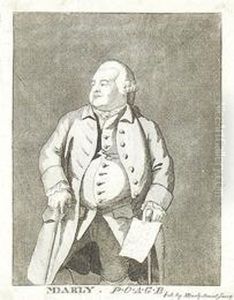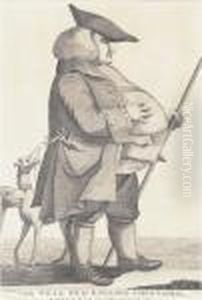Matthew Darly Paintings
Matthew Darly, also known as Matthias Darly, was an English printmaker and caricaturist active during the 18th century, although specific details about his birth year and early life remain obscure. His work as an engraver and publisher was prominent in the 1750s through to his death in 1780. Darly is particularly noted for his contributions to the field of satirical prints, which were popular during the period and served as a form of social and political commentary.
Matthew Darly's notable period of activity was during the reign of George III, where his works often poked fun at the fashions and follies of the time. He is known to have had a shop on the Strand, London, which was a hub for the sale of his prints and other engravings. Darly collaborated with other artists, including his wife Mary Darly, who was also an engraver and print publisher. Together, they produced a series of caricatures and satirical prints that captured the imagination of the British public.
Matthew Darly's work includes a collection of images known as 'Macaronies', which depicted figures with exaggeratedly fashionable clothing and hairstyles, mocking the macaroni fashion trend that swept through British society in the 1770s. This term 'macaroni' eventually came to signify a man who exceeded the ordinary bounds of fashion in terms of clothes and hairstyle, and Darly's work played a significant role in popularizing the concept.
Despite the humor and levity often found in his works, Darly's prints were not merely for entertainment. They provided insightful commentary on the socio-political landscape of his time, critiquing the excesses of the aristocracy, the evolving middle class, and the various social changes occurring in 18th century Britain. His visual satire functioned as a form of public discourse, contributing to the political and social debates of the day.
Although Matthew Darly's exact contributions to the art world are difficult to trace due to the common practice of publishing prints anonymously or under pseudonyms, his impact on the development of caricature and the genre of satirical prints in England is well acknowledged. His work set a precedent for future artists and satirists, influencing the trajectory of visual satire and the use of caricature as a tool for social and political criticism. Unfortunately, due to the lack of thorough records, many aspects of his life and career remain a mystery to art historians.

